#mantis crab
Explore tagged Tumblr posts
Text





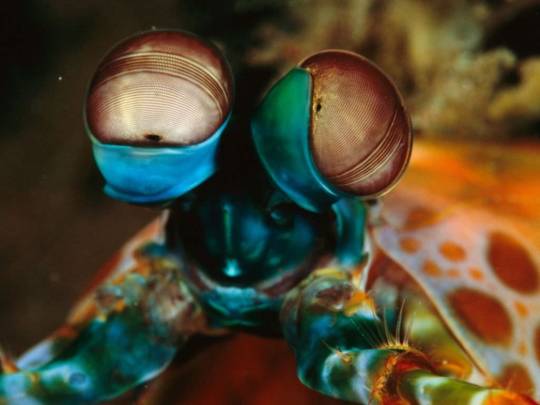











Креветка-богомол Павлиновая или рак-богомол (лат. Odontodactylus scyllarus).
Самцы креветки-богомола обладают очень яркой внешностью. Они переливаются всеми цветами радуги. Тело у них – ярко-зеленое, голова – голубая, передние конечности и антенны – ярко-красные или оранжевые. Самочки не такие пестрые. Чаще всего они имеют коричневый или оливковый окрас.Эти креветки могут достигать 30 сантиметров. Тело их сплющено и вытянуто.
Название «богомол» им приписали за способность мгновенно выбрасывать свои передние конечности. Такой же прием насекомое использует во время защиты от врагов или добывания пищи. По словам биолога Роя Колдуэлла, такой удар у богомола занимает всего 100 миллисекунд, это сравнимо с одним морганием глаза. Удар креветки-богомола в 50 раз быстрее!!! Это самое быстрое движение, на которое способны животные. Но самым удивительным у этого животного яв��яются его глаза. Они имеют сферическую форму и поделены по центру параллельными линиями. Главное то, что они способны воспринимать и преобразовывать поляризованный свет, чего люди делать не могут. Кроме того, эти креветки имеют уникальное зрение, которое позволяет им видеть предметы в оптическом, инфракрасном и ультрафиолетовом диапазонах спектра. Это помогает им распознавать флуоресцентные метки на других креветках в качестве сигналов об опасности или как сигналы угрозы друг другу.
Креветки-богомолы не зря зовутся страшными названиями, вроде «раки-террористы» и «резатели пальцев». В их меню входят крабы, моллюски, улитки, черви, креветки и рыба. Более того, павлиновые креветки – единственные, кто способен полакомиться ядовитым синекольчатым осьминогом, яд которого может убить человека за 15 минут, а противоядия к нему не существует до сих пор.
Ареалом обитания этим красивых и необычных ракообразных является район Барьерного рифа в Австралии. Встречаются они на глубине 40 метров.Живут креветки в самодельных песчаных норках или в коралловых обломках. Длина этих нор может достигать 1 метра, а глубина доходить до 40 сантиметров. Для укрепления, ее стенки креветки покрывают кусочками раковин и частичками кораллов.
Peacock Mantis Shrimp or Mantis Shrimp (Latin: Odontodactylus scyllarus).
Male mantis shrimps have a very bright appearance. They shimmer with all the colors of the rainbow. Their body is bright green, their head is blue, their forelimbs and antennae are bright red or orange. Females are not so colorful. Most often, they have a brown or olive color. These shrimps can reach 30 centimeters. Their body is flattened and elongated.
The name "mantis" was attributed to them for the ability to instantly throw out their forelimbs. The insect uses the same technique when defending itself from enemies or getting food. According to biologist Roy Caldwell, such a strike by the mantis takes only 100 milliseconds, which is comparable to one blink of the eye. The strike of the mantis shrimp is 50 times faster!!! This is the fastest movement that animals are capable of. But the most amazing thing about this animal is its eyes. They are spherical and divided in the center by parallel lines. The main thing is that they are able to perceive and transform polarized light, which people cannot do. In addition, these shrimp have unique vision, which allows them to see objects in the optical, infrared and ultraviolet ranges of the spectrum. This helps them recognize fluorescent marks on other shrimp as signals of danger or as signals of a threat to each other.
It is not for nothing that mantis shrimp are called scary names, such as "terrorist shrimp" and "finger cutters". Their menu includes crabs, mollusks, snails, worms, shrimp and fish. Moreover, peacock shrimp are the only ones who can feast on the poisonous blue-ringed octopus, whose venom can kill a person in 15 minutes, and there is still no antidote to it.
The habitat of these beautiful and unusual crustaceans is the Barrier Reef area in Australia. They are found at a depth of 40 meters. The shrimp live in homemade sand burrows or in coral debris. The length of these burrows can reach 1 meter, and the depth can reach 40 centimeters. To strengthen it, the shrimp cover its walls with pieces of shells and coral particles.
Источник: /ianimal.ru/topics/krevetka-bogomol, /www.techinsider.ru /science/611573-samyy-bystryy-udar-v-okeane-v-chem-sekret-krevetki-bogomola/, //masterok. livejournal.com/1508581.html, //animals.pibig.info/27111-pavlinovaja-krevetka-bogomol.html, //t.me/+fxNu20lM26MwYzhi.
#video#animal video#nature#marine life#marine biology#aquatic animals#crustaceans#Odontodactylus scyllarus#Peacock Mantis Shrimp#mantis crab#underwater#ocean#reef#sea anemones#animal photography#nature aesthetic#видео#фауна#природнаякрасота#природа#океан#ракообразные#Креветка-богомол Павлиновая#рак-богомол#риф#актинии#анемон
186 notes
·
View notes
Text



sketches!
5K notes
·
View notes
Note
If you're still taking requests, could we see you draw some of your favourite sea creatures?

How could I refuse?
#art#marine life#illustration#ask#my art#this has been sitting in my inbox for too long#requests are still closed btw (unless v44 related)#mantis shrimp#moon jellyfish#port jackson shark#horseshoe crab#false killer whale#spotted eagle ray#barnacles#<- also one of my favs#let it be known that i am barnacles no. 1 fan
1K notes
·
View notes
Text
i don't get how some people hate the fact that all mammals are basically extinct in splatoon. yes this is a take i come across at times. its genuinely one of my favorite parts of the setting. "it doesnt make sense that they died" ok. and the 12000 year span that led to fish evolving to swim in the air does? if you can think of a reasoning for that, then surely you can think of reasons for all the mammals to have died. the game literally gives you several. "but what about their dairy products? or stuff like animal hides?" they have agriculture, countless fish and crustacean species that are still animal-like, and thousands of years of history. there's so many options. mammal characters dominate just about every other piece of media with anthropomorphic animal characters. Please just let splatoon have this <3
#rassicas speaks#signed-guy whos favorite kinds of animals are bugs and birds#my excuse for the airborne fish is an evolved swim bladder#me when cute cat or dog video: i sleep#me when cute crab or mantis video: YAYYYYYYYYY#YES this includes marine mammals. this post is mostly about marine mammals. a marine mammal is still a mammal. they are all dead.
465 notes
·
View notes
Text

Sea critter hangout 🌊
Axolotl Eclipse: @nikolliver
Sea Slug Sun: @aquacomet
Kelpie Jack o Moon: @bloo-the-dragon
Sunshoe Crab: @biggiesnails
Moonshoe Crab: @thatmooncake AKA moi
Mantis Shrimp Sun: @flinxypie
#fnaf#moondrop#sundrop#Jack o moon#eclipse#mermay#moonshoe crab#sunshoe crab#mantis shrimp sun#kelpie Jack o moon#sea slug sun#Axolotl eclipse#friend shenanigans#gotta draw more of these guys once zine is over aaaaaa#<3#art fight
346 notes
·
View notes
Text
Round 1 - Phylum Arthropoda
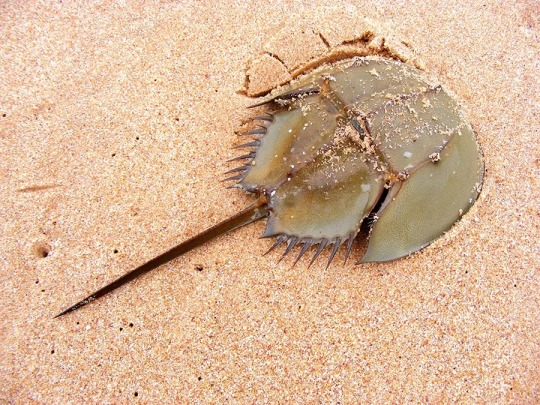



(Sources - 1, 2, 3, 4)
Arthropoda is a phylum of animals that have segmented bodies, possess a chitin exoskeleton, and have paired segmented appendages. They are colloquially called “bugs” though this is often only used for terrestrial arthropods, and sometimes only used for insects specifically.
After Nematoda, this is the most successful phylum, and it is far more diverse, with up to 10 million species! Arthropods account for 80% of all known living animal species. The three major subphyla include the Chelicerates (sea spiders, horseshoe crabs, arachnids, and the extinct eurypterids and chasmataspidids), the Myriapods (centipedes and millipedes), and the Crustaceans (shrimps, prawns, crabs, lobsters, crayfish, seed shrimp, branchiopods, fish lice, krill, remipedes, isopods, barnacles, copepods, opossum shrimps, amphipods, mantis shrimp, entognaths, and insects).
Arthropods are so diverse in fact that it is next to impossible for me to describe a model arthropod. They are important members of marine, freshwater, land, and air ecosystems and are one of only two major animal groups that have adapted to life in dry environments, the others being chordates. All arthropods have an exoskeleton and must molt as they grow, replacing their exoskeleton. Some arthropods go through a metamorphosis in this process. They have brains, a heart, and blood (called hemolymph, though some crustaceans and insects also use hemoglobin). They sense the world through small hairs called setae which are sensitive to vibration, air currents, and even chemicles in the air or water. Pressure sensors function similarly to eardrums. Antennae monitor humidity, moisture, temperature, sound, smell, and/or taste, depending on species. Most arthropods have sophisticated visual systems ranging from simple eyes (ocelli) which orient towards light, to compound eyes consisting of fifteen to several thousand independent ommatidia capable of forming images, detecting fast movement, or even seeing polarized or ultra-violet light. Some arthropods are hermaphroditic, some have more than two sexes, some reproduce by parthenogenesis, some by internal fertilization, some by external, some have complex courtship rituals, some lay eggs, some give live birth, some have prolonged maternal care. The first arthropods are known from the Ediacaran, before the Cambrian era.
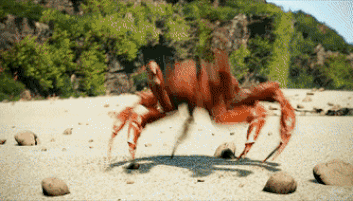
Propaganda below the cut:
Insects are the first animals to have achieved flight
The smallest arthropods are the parasitic crustaceans of the class Tantulocarida, some of which are less than 100 micrometres long. The largest arthropod is the Japanese Spider Crab (Macrocheira kaempferi) with a legspan of up to 4 metres (13 ft) long. The heaviest is the American Lobster (Homarus americanus), which can get up to 20 kilograms (44 lb).
Many arthropods are popular pets, including various species of crab, shrimp, isopod, crayfish, mantis shrimp, millipede, centipede, tarantula, true spider, scorpion, amblypygid, vinegaroon, mantis, cockroach, beetle, moth, and ant! Some are even domesticated, including silk moths and honeybees.
Many arthropods are eaten by humans as a delicacy, and farming insects for food is considered more sustainable than farming large chordates. These farmed arthropods are referred to as “minilivestock.”
Arthropods feature in a variety of ways in biomimicry: humans imitating elements of nature. For example, the cooling system of termite mounds has been imitated in architecture, and the internal structure of the dactyl clubs of mantis shrimp have been imitated to create more damage tolerant materials.
Spider venoms are being studied as a less harmful alternative to chemical pesticides, as they are deadly to insects but the great majority are harmless to vertebrates. They have also been studied and could have uses in treating cardiac arrhythmia, muscular dystrophy, glioma, Alzheimer's disease, strokes, and erectile dysfunction.
Shellac is a resin secreted by the female Lac Bug (Kerria lacca) on trees in the forests of India and Thailand. It is used as a brush-on colorant, food glaze, natural primer, sanding sealant, tannin-blocker, odour-blocker, stain, and high-gloss varnish. It was once used in electrical applications as an insulator, and was used to make phonograph and gramophone records until it was replaced by vinyl.
One of the biggest ecosystem services arthropods provide for humans is pollination. Crops where pollinator insects are essential include brazil nuts, cocoa beans, and fruits including kiwi, melons, and pumpkins. Crops where pollinator insects provide 40-90% of pollination include avocados, nuts like cashews and almonds, and fruits like apples, apricots, blueberries, cherries, mangoes, peaches, plums, pears, and raspberries. In crops where pollinators are not essential they still increase production and yield. Important pollinators include bees, flies, wasps, butterflies, and moths.
Many arthropods are sacred to humans. In Ancient Egypt, scarab beetles were used in art, religious ceremonies, and funerary practices, and were represented by the god Khepri. Bees supposedly grew from the tears of the sun god Ra, spilled across the desert sand. The goddess of healing venomous bites and stings, Serket, was depicted as a scorpion. Kalahari Desert's San People tell of a legendary hero, Mantis, who asked a bee to guide him to find the purpose of life. When the bee became weary from their search, he left the mantis on a floating flower, and planted a seed within him before passing from his exhaustion. The first human was born from this seed. In Akan folklore, the cunning trickster figure Anansi/Ananse is depicted as a spider. Western astrology uses the crab constellation, called Cancer, and the scorpion constellation, called Scorpio. Dragonflies symbolize pure water in Navajo tradition. In Anishinaabe culture, dreamcatchers are meant to represent spiderwebs and are used as a protective charm for infants. They originate from the Spider Grandmother, who takes care of the children and the people of the land in many Native American cultures. The Moche people of ancient Peru often depicted spiders and crabs in their art. In an Ancient Greek hymn, Eos, the goddess of the dawn, requests of Zeus to let her lover Tithonus live forever as an immortal. Tithonus became immortal, but not ageless, and eventually became so small, old, and shriveled that he turned into the first cicada. Another hymn sings of the Thriae, a trinity of Aegean bee nymphs. Native Athenians wore golden grasshopper brooches to symbolize that they were of pure, Athenian lineage. In an Ancient Sumerian poem, a fly helps the goddess Inanna when her husband Dumuzid is being chased by galla demons. In Japanese culture, butterflies carry many meanings, from being the souls of humans to symbols of youth to guides into the afterlife. Ancient Romans also believed that butterflies were the souls of the dead. Some of the Nagas of Manipur claim ancestry from a butterfly. Many cultures use the butterfly as a symbol of rebirth. And the list goes on…
cute crab eat a strawbebby:
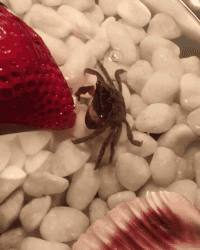
#round 1#animal polls#listen narrowing it down to just 4 images almost killed me#if arthropods don’t move on to round 2 I will have to take like an extra week off to mourn that I can’t show you all the cool bugs#there’s so many cool bugs guys#i chose the orchid mantis over a trilobite beetle and a poofy little bee fly cause I figured it had broader appeal#and used a horseshoe crab instead of a spider cause people are so Weird about spiders I worried it would impact the numbers#sigh#anyway I’m really hoping for Chordata Arthropoda Mollusca as top three#other phyla are all great but these three would make for the most interesting Round 2 imo#arthropoda
242 notes
·
View notes
Text

shop update is coming this friday (3/7) !
i have a lot of new goodies ready to share, including my first art prints in the shop (one is hand printed by me!) along with a handful of new stickers and some new charms. get excited! You can follow along on Instagram (I have a reminder set up there) if you want to make sure you have access to some of the more limited prints!
#my art#digital art#queer artist#marine biology#crustacean#fish#shrimpfish#canada goose#crab#shrimp#mantis shrimp#octopus#arapaima
120 notes
·
View notes
Text
Reblog to feed your mutuals a nice clam.
75 notes
·
View notes
Text

Ayo they put a MANTIS SHRIMP in this game ? !
#I went wild when I saw him#knew I had to draw him after I beat him#also I haven't finished the game yet so no spoilers pleasee#another crab’s treasure#another crab's treasure topoda#grovekeeper topoda#another crab's treasure fanart#effen's art#mantis shrimp
309 notes
·
View notes
Text
@iridiumurchin submitted: Brace for impact, because I found a bunch. All are from Yavapai county arizona.

I don't have species IDs on most of these.

This one would absolutely NOT sit still.

I've never seen this one before.

These are pretty widespread but I can never remember the species.

I put a bunch of your submissions into one post rather than post so many separately! These are all super nice friends! The last fella is indeed common in Arizona. It’s a giant crab spider which is a type of huntsman :) You didn’t really ask for IDs on the others so I assume I’m just meant to admire
#insects#bugs#arachnids#spider#giant crab spider#huntsman spider#praying mantis#grasshopper#beetle#moth
101 notes
·
View notes
Text
We had one sunny day for the first time in months and I got inspired

Beach bugs™️
#traditional drawing#digital art#artist on tumblr#illustration#bug art#oc art#bug ocs#my ocs#beetle#crab#mantis#ocs#oc sherri#oc Imita#oc Bellini#beachwear#beach#bug girls
23 notes
·
View notes
Text

i’m on vacation (in canada!!!!!!!!) but after visiting an aquarium and seeing Peacock Mantis Shrimps my autism kicked in hardcore. I LOVE these funny guys, and having recently played and finished Another Crab’s Treasure, Grovekeeper Topoda came to mind. Love him
#adorable fella#peacock mantis shrimp#mantis shrimp#art#drawing#doodle#Grovekeeper Topoda#Topoda#ACT Grovekeeper Topoda#another crabs treasure#ACT#another crab’s treasure
55 notes
·
View notes
Text

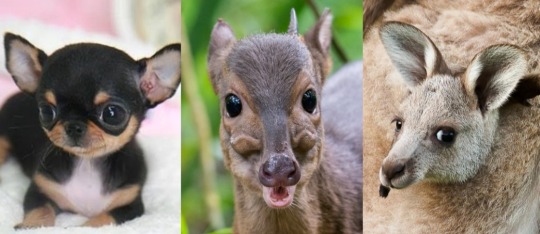



Board of animals I love and also like to look at...👁👁
#animals#animals i like#favorite animals#my favorite animals#animal board#moodboard?#tw arachnophobia#tw insects#just in case#mourning dove#quail chick#sandpiper#chihuahua#blue duiker#kangaroo joey#cat#deer fawn#praying mantis#american woodcock#jumping spider#baby weasel#deaths head hawk moth#camel#baby sea turtles#electric eel#cougar#baby monkey#bess beetle#caterpillar#crab
66 notes
·
View notes
Text

Here are all my arthropod OCs in one drawing!
#art#artists on tumblr#oc#oc art#furry#furry art#anthro#anthro art#furry oc#anthro oc#arthropod#arthropods#bee#bumblebee#moth#luna moth#spider#grass spider#crab#japanese spider crab#mantis#praying mantis
15 notes
·
View notes
Text



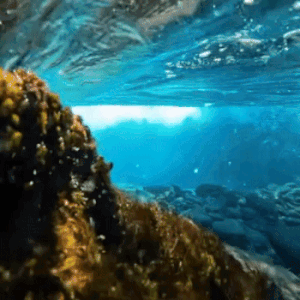
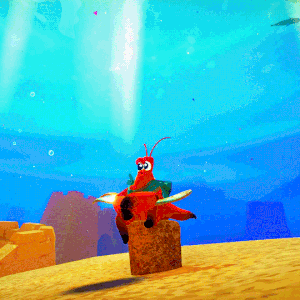

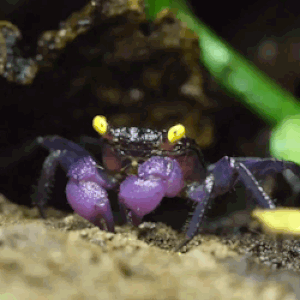


another crab's treasure-themed board for an anon!
🦀 🪙 🦀
🐚 🦀 🐚
🦀 🪙 🦀
#stimboard#stim#stimmy#sensory#schezlover.board#crab stim#crabs#animal stim#animals#ocean stim#underwater stim#undersea stim#reef stim#hermit crab stim#mantis shrimp stim#another crab's treasure#another crab's treasure stimboard#blue#white#purple#brown#red#preening#fish stim#fish#nature
58 notes
·
View notes
Text
Exotic Creatures - Siralim Ultimate
These actually belong to what is essentially the game's "other" category instead of a cohesive set, but there is only one image of each so I'll just post them all at once.
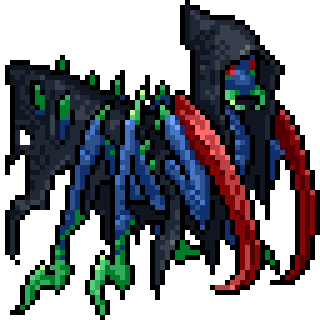

First, we have a blue mantis with red, scythe-like forelegs, draped in tattered cloth. Despite their scary, reaper-like appearance, they actually work with humans, alerting them of incoming earthquakes and mine-collapses.
Next is a leechy-looking grub with eight legs and a gaping maw with several rows of teeth. I like their cute, beady eyes. They decide territorial disputes using the eye-like markings on their tails.

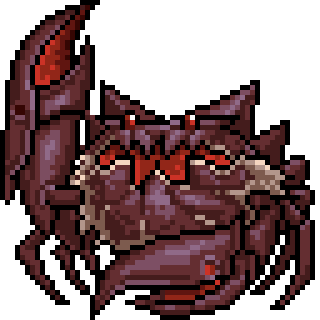
The Paladin Crab is a cool, armoured crab that was created by the god of fortune to protect the shame-faced crabs that gathered around him for safety. How nice of him!
The Proto-Brachyura is a cute, ancient crab that sits still and snatches fish that swim by. It is normally fully aquatic, but magic allows it to breathe air. But then it ends up laying in wait for fish on land, and ends up starving to death...


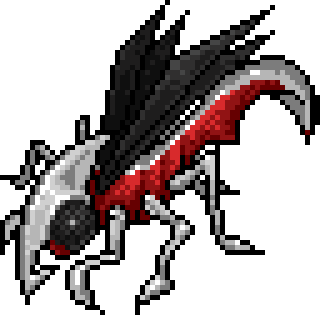
The big, blue and green bumblebee doesn't have its lore listed on the site I'm using and exotic monsters are too time-consuming to seek out in-game for me to get it myself. It's a solid bee regardless. It has an ability that hurts it when it attacks, although it doesn't kill it like the Waspid Soldier's ability does. But bumblebee stingers don't have barbs either!
Next is a jewel beetle with a shiny carapace that resembles stained glass. They can change their colour, turning pale in captivity to discourage capture.
Last is a metallic, silver and red insect with a bladed head and angular, black wings. It eats wood. A very sharp looking creature.
#vg bug#insect#mantis#larva/nymph#crustacean#crab#hymenoptera#bee#various#beetle#identifiable#nonspecific#siralim ultimate#siralim
10 notes
·
View notes